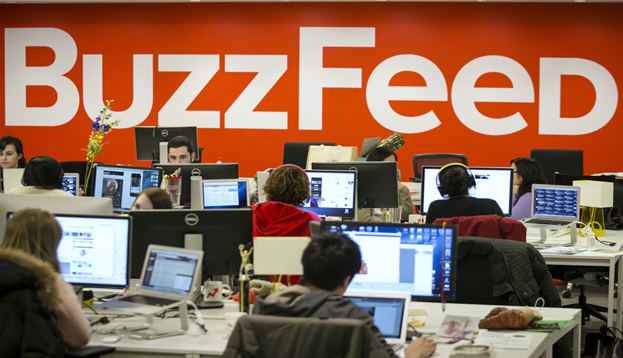At AdAge’s recent 4A Conference, an Economist study was revealed which showed that 93 percent of content marketers said they connected content with products and services. Furthermore, 75 percent of content marketers said content should frequently mention products.
The study exposed a fundamental issue with the way a lot of content marketing and native advertising is done today. It’s basically approached like a camouflaged ad, something that John Oliver touched on in his now classic monologue.
“There’s banner blindness. Over time, we’ll start to see more and more content blindness,” said Elena Sukacheva, managing director of global content solutions group for The Economist Group.
So why is so much of the native content really just camouflaged ads trying to sell things Partly because the marketers who order this kind of content have the misconception that it needs to be product-focused to be effective. Secondly, something that Digiday touched on in a piece today: the ‘grumpy journalism refugees’ who create this kind of content are (often) really bad at branded content.
“Creating effective branded content requires a specialized, almost paradoxical, set of skills. Not only must the creator write content in a way that is easy-to-read and informative, but they must also answer to people on the business side and take criticism from clients — something that journalists have not traditionally been good at or willing to do,” said Ricardo Bilton in the piece.
True that.
As a former journalist specializing in this kind of content, I can attest to having to check my old ego at the door when pleasing clients. For the longest time, I was brought up to value “neutral” journalism and the value of traditional media over new media. Now all of a sudden you’re in the service business and you have both clients and an audience to please.
Advertising copywriters are not having an easy time with branded content either. They are used to a product-focused approach that is less about what the audience wants and more about what the CMO wants. They are used to a different kind of storytelling and a sensibility for what stands out on a page rather than what blends in.
However, we all have everything to gain and nothing to lose by making sure that content marketing works and that “content blindness” does not become a thing. If done right, it has the potential to solve a lot of the problems consumers have with marketing, while serving as the funding mechanism for really meaningful content going forward.
A great story, well-told is appreciated by everyone, whether commissioned by a brand or not, to paraphrase Jason Hill, global director of media and content strategy at GE, at the 4A conference, adding: “I think it’s also easy to do a lot of crap in native.”
So, in the words of John Oliver, let’s stay away from the “repurposed bovine waste” and focus on good storytelling, no matter what we call it, and everyone wins.
And then let’s all just have a Coke and a smile. Oops, I did it again. My bad.
